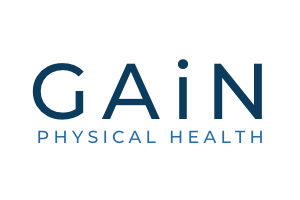What can Chiropractic treatment do to help Headaches?
As a Chiropractor, I treat a wide variety of conditions, and one of the most common issues my patients come to me for is headaches. Whether they are mild, occasional, or debilitating, headaches can significantly impact your daily life. What many people don’t realize is that chiropractic care can be an effective treatment for many types of headaches.
There are multiple headaches, with various classifications and therefore understanding the specific type of headache you are experiencing is crucial for effective treatment. By identifying the characteristics of each type, we can better tailor treatments to provide relief and improve your quality of life.
What are the most common headaches and their symptoms?
Tension Headaches
Tension headaches are among the most common types, often described as a dull, aching sensation that can feel like a tight band around the head. Symptoms may include tenderness in the scalp, neck, and shoulders. Triggers often include stress, lack of sleep, poor posture.

Cervicogenic Headaches
Cervicogenic headaches originate from structural or functional issues in the cervical spine (neck). Typically, the pain is unilateral (affecting one side) and may be described as dull or throbbing. It can radiate from the neck to the front of the head, above the eyes, or around the temples. Cervicogenic headaches may be accompanied by neck pain, reduced range of motion in the neck, and sometimes symptoms such as nausea or sensitivity to light.
Migraines with Aura
Migraine with aura, according to the International Headache Society, involves recurrent attacks of headache accompanied by neurological symptoms known as aura. These aura symptoms typically precede or occur alongside the headache and can include visual disturbances (like flashes of light or blind spots), sensory changes (such as tingling or numbness), or speech difficulties. The headache is usually unilateral, pulsating, and lasts 4 to 72 hours. The presence of aura differentiates this type from migraine without aura.
Migraines without Aura
Migraine without aura, as defined by the International Headache Society, is characterized by recurrent attacks of moderate to severe headache that typically last 4 to 72 hours. The headache is often unilateral (one-sided), pulsating in quality, and may be accompanied by nausea, vomiting, or sensitivity to light (photophobia) and sound (phonophobia).
Temporomandibular Disorder (TMD) and Headaches
Temporomandibular disorder (TMD) can lead to headaches as a result of jaw misalignment or muscle tension in the jaw and neck area. Symptoms often include jaw pain, difficulty chewing, and headaches that may feel like tension or migraines. Treatment typically involves dental evaluations, Chiropractic, and stress management techniques. In some cases, dental appliances or medications may be necessary to relieve the symptoms.
How do Chiropractors examine headaches?
Chiropractors play a vital role in evaluating headaches, especially those related to musculoskeletal issues. Here’s how they typically assess patients:
- Comprehensive Medical History: The chiropractor will begin by taking a detailed medical history, asking about the frequency, duration, and nature of your headaches, as well as any associated symptoms. This helps identify potential red flags.
- Physical Examination: A thorough physical examination is conducted, focusing on the neck, spine, and head. The Chiropractor will assess range of motion, tenderness, and any joint restrictions in the spine that may contribute to headache symptoms.
- Neurological and Orthopaedic Assessment: Chiropractors often perform a Neurological and Orthopaedic assessments to check for tissue change, nerve involvement or other neurological issues that can accompany the headache.
- Posture and Ergonomics Evaluation: Chiropractors will evaluate your posture and daily habits to identify contributing factors, such as poor ergonomics at work or habits that strain the neck and shoulders.
 Red Flag Headaches: what Chiropractors look for to keep you safe:
Red Flag Headaches: what Chiropractors look for to keep you safe:
While most headaches are benign and manageable, certain “red flag” symptoms can indicate a more serious underlying condition. Recognizing these signs is crucial for timely intervention. Here are key red flags to be aware of:
- Sudden Onset: If a headache strikes suddenly and intensely, often described as a “thunderclap,” it may indicate a serious issue, such as a haemorrhage.
- Change in Pattern: If you experience a significant change in your usual headache pattern—such as increased frequency or intensity—this should be evaluated.
- Neurological Symptoms: Symptoms such as confusion, vision changes, weakness, or loss of coordination can signify a neurological issue.
- Headache after Injury: If you develop a headache after a head injury, it’s important to seek medical attention.
- Persistent or Severe Headaches: Headaches that do not respond to typical treatments or that persist for an extended period should be assessed.
- Accompanied by fever or stiff neck: If headaches are accompanied by fever, stiff neck, or other systemic symptoms, they could indicate an infection or other serious condition.
Should any of these features be present in your consultation, The Chiropractor will Referral for Imaging or Specialist Consultation. Referrals may include further imaging (such as X-rays or MRI) or to a medical specialist for additional evaluation.
How does Chiropractic care help and what are the Common treatment pptions?
At GAiN Physical Health, we believe that chiropractic care goes beyond simple adjustments. We offer a variety of tailored techniques designed specifically for your individual needs and presenting complaints. Our goal is to help you achieve pain relief as quickly as possible, utilizing a holistic approach to support your overall well-being. Below are some examples and explanations of what we can provide.
- Soft tissue work – soft tissue interventions, such as trigger point therapy, instrument-assisted soft tissue mobilization, cupping, and massage, can significantly enhance the quality of your tissues and improve their ability to withstand load and strain. Dysfunctional tissues often arise from factors like overuse, injury, stress, or poor posture. These issues can lead to referred pain in areas associated with headaches. Fortunately, these interventions can effectively treat and alleviate such discomfort.
- Spinal Manipulation – spinal manipulation is a safe and effective method for restoring function to the spine. While not every client may require this treatment, those who do often respond positively. Spinal manipulation helps restore proper movement to the joints in the spine, which can reduce stiffness and improve overall mobility. Additionally, it can alleviate muscle tension and spasms, promoting relaxation in the surrounding musculature and reducing pain associated with tight muscles. Moreover, spinal manipulation may stimulate the release of endorphins—your body’s natural painkillers—and activate pain-gating mechanisms in the nervous system, helping to decrease the perception of pain. Adjustments can also enhance circulation in the area, promoting healing by delivering more oxygen and nutrients to tissues while facilitating the removal of waste products. Overall, spinal manipulation can play a crucial role in improving function and enhancing overall well-being.
- Exercise Rehabilitation and Strengthening – while hands-on interventions are effective for alleviating symptoms, it’s crucial to identify and address the underlying causes that contribute to those symptoms in the first place. This approach reduces the likelihood of recurrence. Correcting dysfunctional movement patterns and enhancing your body’s capacity to tolerate load are key factors in this process. By focusing on these elements, we can create a more sustainable path to health and wellness.
Additional Lifestyle Advice:
- Hydration – Multiple studies have highlighted the relationship between dehydration and headache occurrence. A pivotal study published in the American Journal of Clinical Nutrition found that participants who were mildly dehydrated experienced more frequent and intense headaches compared to those adequately hydrated. While individual hydration needs can vary, general guidelines suggest that adults should aim for about 3.7 liters (or about 13 cups) of total water intake per day for men, and 2.7 liters (or about 9 cups) for women. However, factors such as age, activity level, and climate can significantly influence these needs. Maintaining proper hydration is essential not just for overall health but also for preventing headaches. By understanding the connection between hydration and headaches, individuals can take proactive steps to manage their fluid intake and potentially reduce headache frequency and intensity.
- Sleep – poor sleep has been shown through multiple articles to affect headache prevalence. Here are a few key points. Headache and Sleep Disorders: Sleep disorders, such as insomnia and sleep apnoea, significantly increase the frequency and intensity of headaches, particularly migraines. Impact of Sleep Quality: Poor sleep quality is associated with a higher incidence of headaches. Individuals with migraines often report disturbed sleep patterns, highlighting the bidirectional relationship between sleep and headache. Circadian Rhythms: Disruption of circadian rhythms can trigger headaches. Maintaining regular sleep-wake cycles is crucial for reducing headache occurrences. Sleep Deprivation and Oversleeping: both sleep deprivation and oversleeping can serve as triggers for migraine attacks, indicating that consistency in sleep patterns is important. Understanding the link between sleep and headaches is crucial for those who suffer from chronic headaches. By prioritizing sleep hygiene and recognizing the signs of poor sleep quality, individuals can take meaningful steps to reduce headache frequency and enhance overall health.
- Stress control – managing stress is essential for effective headache relief, as it plays a significant role in triggering various types of headaches, particularly tension-type and migraines. High stress levels often lead to increased muscle tension in the neck and shoulders, contributing to discomfort and pain. Additionally, stress can disrupt hormonal balance and interfere with sleep quality, both of which are linked to headache occurrences. By incorporating stress management techniques, individuals can reduce the frequency and severity of headaches while improving their overall emotional well-being.
For more information about Dr. Marcus Higgins click here
Marcus is a registered Chiropractor with the College of Chiropractors of Alberta (2499) and practices from GAiN Physical Health in Canmore, Alberta.






